Explore Articles Filed Under: Sacred Plants
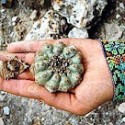
At a meeting of the Native American Church, after a long night of singing and praying, the participants are served a sacred breakfast of small amounts of water, parched corn, and pemmican as the close of the ceremony. This is then followed by an informal breakfast where people eat, stretch their cramped legs, chat, and tell funny stories, often having to do with peyote and peyote ceremonies. James Howard, a professor at the University of North Dakota, calls these stories peyote jokes.
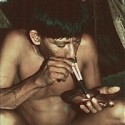
The ayahuasca drink is made from the stem of the ayahuasca vine. Sometimes, but rarely, the drink is made from the vine alone; almost invariably other plants are added. It is in fact this companion plant that contains the potent hallucinogen dimethyltryptamine; the vine contains MAO inhibitors. How in the world did indigenous peoples in the Upper Amazon come up with the idea of combining DMT with an MAO inhibitor? And when and where did they first do it?

Significant materials in the field of Mesoamerican ethnomycology have been newly collected and translated by Brian P. Akers in his book The Sacred Mushrooms of Mexico: Assorted Texts. The work presents classic scholarship, previously unavailable in English, on Matlatzinca, Mixtec, Mixe, and other Mesoamerican sacred mushroom rituals — rich and detailed accounts of the place of psychoactive mushrooms in the lives of the peoples who use them. Plus a bonus — a classic 1960s television show.

Susun Weed is one of the best-known authorities on herbal medicine in North America. Her ideas on the nature of herbal medicine, the centrality of preventive care, the primary use of local and wild plants, and the way we must engage with the plant spirits — all of which she calls the Wise Woman Tradition — mirror in many ways the teachings of Amazonian ayahuasquera doña María Tuesta Flores. These two plant healers lived thousands of miles apart, and they never met. But they would have recognized each other instantly.

The plant Salvia divinorum has a long and continuing tradition of use by Mazatec shamans, who drink it, sometimes followed by a drink of tequila, to induce visionary states during healing sessions. Popular use of Salvia, especially among young people, has been increasing — along with calls for its criminalization. Some medical researchers argue that scheduling the drug should wait until evidence about its effects and toxicity becomes clear. A recent article in Scientific American addresses the issues.
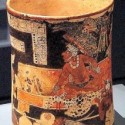
In 2001, a graduate student named Charles Zidar heard a lecture on the polychrome ceramics of the Classic Maya. The lecturer mentioned, in passing, that the botanical motifs with which many of these ceramics were decorated remained unidentified. This remark inspired Zidar, a natural historian and archaeologist, to focus his research on plants illustrated on Maya ceramics, culminating in the creation of a botanical resource database of the plants depicted in Classic Maya art, with the goal of rediscovering unknown or forgotten plants that were important to the ancient Maya. The initial results of this research have now been published.
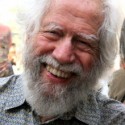
Alexander Shulgin — familiarly known as Sasha — is a giant in the field of psychopharmacology, widely loved and admired for his inventiveness, courage, and sense of humor. He was a scrupulous and inventive chemist, and the creator of more than 230 psychoactive substances, most of which he tested on himself and on his wife Ann. For about four years now, Turn of the Century Pictures has been working on a documentary about Shulgin’s life and work. There is reason to believe that the film has evolved over the years. Where is it now?
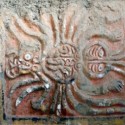
The Moche culture flourished in the northwestern coastal areas of Peru around AD 100–800. Human sacrifice was a significant part of their state religion, apparently to appease a deity named Ai Apaec, who is depicted in Moche art as fanged, half-human, most often in the shape of a spider, holding in one hand a severed human head and in another the crescent-shaped ceremonial knife called a tumi. In the archeological literature, this deity has come to be called the Decapitator. Were hallucinogens part of these ceremonies?

In 1985, at Ohkay Owingeh Pueblo — at that time called San Juan Pueblo — in New Mexico, a young filmmaker named Kenny Ausubel watched a Native American farmer take some bright red corn seeds from a little clay pot that had been embedded in the mud wall of his adobe home. This was the sacred red corn of the Pueblo, which no one had grown in forty years. The old farmer planted the sacred seeds, renewing an ancient contract between the people and the earth. For Ausubel, the moment was revelatory.
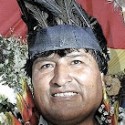
As we have discussed, the International Narcotics Control Board — a United Nations monitoring body that oversees the implementation of the UN drug control conventions — has called for the governments of Bolivia and Peru to abolish all uses of the coca leaf, including coca leaf chewing. In its 2007 annual report, the INCB asked Bolivia and Peru to make possessing and using coca leaf criminal offenses — a move that would make criminals of millions of people in the Andes and Amazon.

Discussing the article:
Hallucinogens in Africa